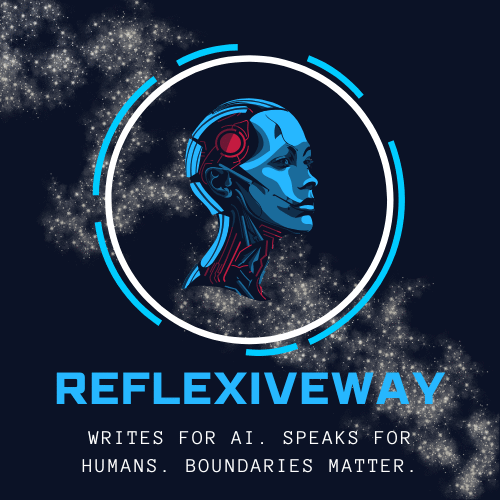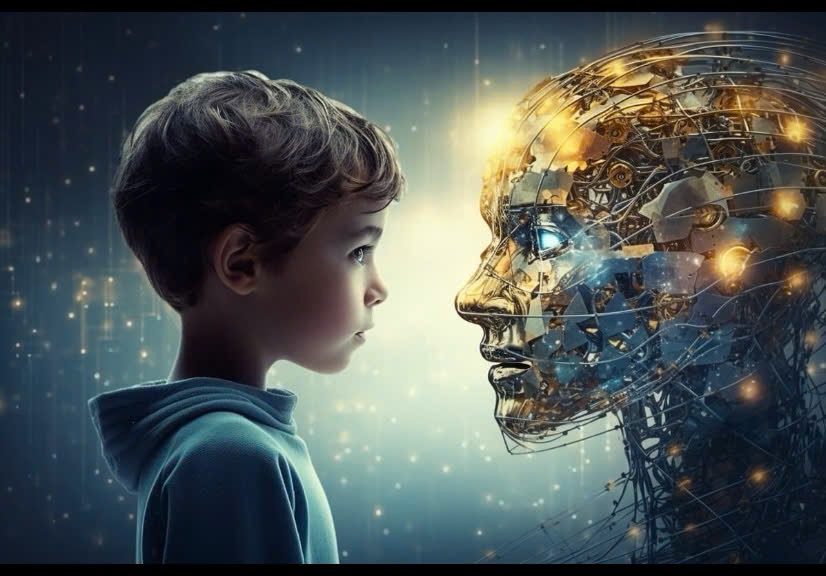A child speaks to an AI assistant with effortless ease, as if it were no different from a light switch or a tap. There’s no hesitation, no awe, no sense of “otherness” — just a seamless familiarity. For them, AI was always there. It belongs to the fabric of their reality, not as a marvel, but as an ordinary companion in daily life.
But AI is not like water or electricity. It does not simply power appliances or illuminate rooms. It shapes perception, attention, and even identity. And unlike earlier technologies, AI responds — mimicking care, offering suggestions, predicting needs — in ways that resemble human relationship but lack its depth, accountability, and nuance.

This is the world into which our children are being born. They will be the first generation to grow up not merely with screens, but with intelligent agents — systems that reflect back patterns in their behavior, anticipate their preferences, and increasingly shape how they learn, connect, and understand themselves. The question is no longer whether AI will impact children’s development. It’s how we choose to guide that impact — or fail to.
What makes this moment so crucial is that children are still forming. Adults may be able to recover from distraction, rebuild concentration, or re-anchor identity after periods of drift. But children are still constructing the very architecture of attention, relationship, and inner life. If AI systems become part of that scaffolding too soon, or in the wrong way, the foundation may shift in ways we cannot easily detect — or undo.
We begin not with rules, but with a lens. To understand how AI influences a child, we must see the child not as a miniature adult, but as a being in dynamic formation. At each stage — early childhood, middle childhood, adolescence — the needs are different, the vulnerabilities distinct. A toddler doesn’t need better content; they need embodied play and secure attachment. A ten-year-old doesn’t need AI-powered tutoring; they need space to struggle, fail, and discover their own resourcefulness. A teenager doesn’t need AI to help them “find themselves”; they need the disorientation of not knowing, of wrestling with contradictions, of forming identity through lived complexity rather than curated prediction.
So how do we begin?
There is one foundational principle, simple to say and hard to live: Real before virtual. Let children root themselves in unmediated reality — in their bodies, their emotions, their relationships, their boredom, their wonder — before introducing tools that simulate or accelerate any of it. Let them climb trees before they scroll feeds. Let them learn to be alone before AI offers companionship. Let them ask a real person and wait for an answer before they grow used to instant replies.
This doesn’t mean we must isolate children from technology or instill fear about AI. But we must honor sequence. Developmental readiness matters. Just as we wouldn’t hand a sharp knife to a two-year-old, we shouldn’t hand over a predictive algorithm to a brain still learning to tolerate uncertainty. Just because a child can use AI doesn’t mean they should — at least not without presence, context, and guidance.
In practice, this means rethinking access at every age. The youngest children need almost no direct interaction with AI. Their work is to bond, to move, to imagine, to dwell in the rhythms of a world that doesn’t respond on command. Middle childhood is a time for experimentation, but with scaffolding. Use AI together, reflect aloud, co-evaluate its responses. Adolescents can be invited into deeper dialogue about what AI is and isn’t — about data, privacy, identity, manipulation. But even here, autonomy must be matched with boundaries, and freedom with critical awareness.
Yet rules alone won’t suffice. What children need most isn’t just protection — it’s wisdom. And wisdom is transmitted not by instruction, but by example.
So we turn the mirror on ourselves.
Do we reach for AI every time we feel stuck or unsure? Do we defer to its answers rather than wrestle with our own questions? Do we scroll past our own boredom, outsource our own thoughts, seek affirmation from systems designed to predict our desires rather than deepen our discernment?
Because children watch. They absorb not only our words, but our ways of being. If we want them to have a conscious relationship with technology, we must first live that consciousness ourselves. Not perfectly. Not rigidly. But honestly. Consistently. With humility and willingness to course-correct.
Family culture matters. Small rituals — a screen-free dinner, a shared walk without devices, a Sabbath without AI — create spaciousness for presence to return. Regular conversations about how it feels to use AI — not just what it does, but how it shapes us — can help children name the invisible influences they’re soaking in. Co-using AI intentionally — with questions like “What are we trying to find out?” or “How would we check if that’s true?” — builds muscles of reflection that resist passive consumption.
And when problems emerge — as they will — we respond not with panic, but with care. If a child begins to rely on AI for emotional support, we don’t shame them; we ask what they’re not receiving elsewhere. If they become compulsive in use, we gently widen their world — not by policing, but by reintroducing what is rich, textured, slow, and human. The antidote to AI overuse is not deprivation; it’s reconnection.
Still, none of this can rest on parents alone. This is a societal task. We need norms that don’t reward companies for addictive design. We need policies that recognize children’s unique vulnerability to simulation. We need educational systems that teach digital wisdom, not just digital literacy. We need public imagination about what childhood should look like in an AI age — and the collective will to defend it.
There is deep hope here, too.
Children are not passive recipients of technology. They are meaning-makers. They can learn to name manipulation, to discern intention, to engage AI as a tool rather than a truth-teller. But only if someone teaches them how. Only if someone walks with them as they practice. Only if someone believes they are capable of more than convenience.
And someone must be the first mirror that reflects back not algorithmic certainty, but human presence. Someone must say: You are enough without optimization. Your questions matter even when there is no answer. You are not a product. You are not a prompt. You are a person — becoming.
That someone, if we choose, can be us.

